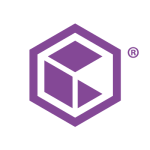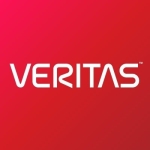What is our primary use case?
Originally, I was looking for a solution that allowed us to replicate our critical workloads to a cloud target and then pay a monthly fee to have it stored there. Then, if some kind of disaster happened, we would have the ability to instantiate or spin up those workloads in a cloud environment and provide access to our applications. That was the ask of the platform.
We are a manufacturing company, so our environment wouldn't be drastically affected by a webpage outage. However, depending on the applications that are affected, being a $15 billion dollar company, there could be a significant impact.
How has it helped my organization?
Zerto is very good in terms of providing continuous data protection. Now bear in mind the ability to do this in the cloud is newer to them than what they've always done traditionally on-premises. Along the way, there are some challenges when working with a cloud provider and having the connectivity methodology to replicate the VMs from on-premises to Azure, through the Zerto interface, and make sure that there's a healthy copy of Zerto in the cloud. For that mechanism, we spent several months working with Zerto, getting it dialed in to support what we needed to do. Otherwise, all of the other stuff that they've been known to do has worked flawlessly.
The interface is easy to use, although configuring the environment, and the infrastructure around it, wasn't so clear. The interface and its dashboard are very good and very nice to use. The interface is very telling in that it provides a lot of the telemetry that you need to validate that your backup is healthy, that it's current, and that it's recoverable.
A good example of how Zerto has improved the way our organization functions is that it has allowed us to decommission repurposed hardware that we were using to do the same type of DR activity. In the past, we would take old hardware and repurpose it as DR hardware, but along with that you have to have the administration expertise, and you have to worry about third-party support on that old hardware. It inevitably ends up breaking down or having problems, and by taking that out of the equation, with all of the DR going to the cloud, all that responsibility is now that of the cloud provider. It frees up our staff who had to babysit the old hardware. I think that, in and of itself, is enough reason to use Zerto.
We've determined that the ability to spin up workloads in Azure is the fastest that we've ever seen because it sits as a pre-converted VM. The speed to convert it and the speed to bring it back on-premises is compelling. It's faster than the other ways that we've tried or used in the past. On top of that, they employ their own compression and deduplication in terms of replicating to a target. As such, the whole capability is much more efficient than doing it the way we were doing it with Rubrik.
If we lost our data center and had to recover it, Zerto would save us a great deal of time. In our testing, we have found that recovering the entire data center would be completed within a day. In the past, it was going to take us close to a month.
Using Zerto does not mean that we can reduce the number of people involved in a failover. You still need to have expertise with VMware, Zerto, and Azure. It may not need to be as in-depth, and it's not as complicated as some other platforms might be. The person may not have to be such an expert because the platform is intuitive enough that somebody of that level can administer it. Ultimately, you still need a human body to do it.
What is most valuable?
The most valuable feature is the speed at which it can instantiate VMs. When I was doing the same thing with Rubrik, if I had 30 VMs on Azure and I wanted to bring them up live, it would take perhaps 24 hours. Having 1,000 VMs to do, it would be very time-consuming. With Zerto, I can bring up almost 1,000 VMs in an hour. This is what I really liked about Zerto, although it can do a lot of other things, as well.
The deduplication capabilities are good.
What needs improvement?
The onset of configuring an environment in the cloud is difficult and could be easier to do. When it's on-premises, it's a little bit easier because it's more of a controlled environment. It's a Windows operating system on a server and no matter what server you have, it's the same.
However, when you are putting it on AWS, that's a different procedure than installing it on Azure, which is a different procedure than installing it on GCP, if they even support it. I'm not sure that they do. In any event, they could do a better job in how to build that out, in terms of getting the product configured in a cloud environment.
There are some other things they can employ, in terms of the setup of the environment, that would make things a little less challenging. For example, you may need to have an Azure expert on the phone because you require some middleware expertise. This is something that Zerto knew about but maybe could have done a better job of implementing it in their product.
Their long-term retention product has room for improvement, although that is something that they are currently working on.
For how long have I used the solution?
We have been with Zerto for approximately 10 years. We were probably one of the first adopters on the platform.
What do I think about the stability of the solution?
With respect to stability, on-premises, it's been so many years of having it there that it's baked in. It is stable, for sure. The cloud-based deployment is getting there. It's strong enough in terms of the uptime or resilience that we feel confident about getting behind a solution like this.
It is important to consider that any issues with instability could be related to other dependencies, like Azure or network connectivity or our on-premises environment. When you have a hybrid environment between on-premises and the cloud, it's never going to be as stable as a purely on-premises or purely cloud-based deployment. There are always going to be complications.
What do I think about the scalability of the solution?
This is a scalable product. We tested scalability starting with 10 VMs and went right up to 100, and there was no difference. We are an SMB, on the larger side, so I wouldn't know what would happen if you tried to run it with 50,000 VMs. However, in an SMB-sized environment, it can definitely handle or scale to what we do, without any problems.
This is a global solution for us and there's a potential that usage will increase. Right now, it is protecting all of our criticals but not everything. What I mean is that some VMs in a DR scenario would not need to be spun up right away. Some could be done a month later and those particular ones would just fall into our normal recovery process from our backup.
The backup side is what we're waiting on, or relying on, in terms of the next ask from Zerto. Barring that, we could literally use any other backup solution along with Zerto. I'm perfectly fine doing that but I think it would be nice to use Zerto's backup solution in conjunction with their DR, just because of the integration between the two.
How are customer service and technical support?
In general, the support is pretty good. They were just acquired by HP, and I'm not sure if that's going to make things better or worse. I've had experiences on both sides, but I think overall their support's been very good.
Which solution did I use previously and why did I switch?
Zerto has not yet replaced any of our legacy backup products but it has replaced our DR solution. Prior to Zerto, we were using Rubrik as our DR solution. We switched to Zerto and it was a much better solution to accommodate what we wanted to do. The reason we switched had to do with support for VMware.
When we were using Rubrik, one of the problems we had was that if I instantiated the VM on Azure, it's running as an Azure VM, not as a VMware VM. This meant that if I needed to bring it back on-premises from Azure, I needed to convert it back to a VMware VM. It was running as a Hyper-V VM in Azure, but I needed an ESX version or a VMware version. At the time, Rubrik did not have a method to convert it back, so this left us stuck.
There are not a lot of other DR solutions like this on the market. There is Site Recovery Manager from VMware, and there is Zerto. After so many years of using it, I find that it is a very mature platform and I consider it easy to use.
How was the initial setup?
The initial setup is complex. It may be partly due to our understanding of Azure, which I would not put at an expert level. I would rate our skill at Azure between a neophyte and the mid-range in terms of understanding the connectivity points with it. In addition to that, we had to deal with a cloud service provider.
Essentially, we had to change things around, and I would not say that it was easy. It was difficult and definitely needed a third party to help get the product stood up.
Our deployment was completed within a couple of months of ending the PoC. Our PoC lasted between 30 and 60 days, over which time we were able to validate it. It took another 60 days to get it up and running after we got the green light to purchase it.
We're a multisite location, so the implementation strategy started with getting it baked at our corporate location and validating it. Then, build out an Azure footprint globally and then extend the product into those environments.
What about the implementation team?
We used a company called Insight to assist us with implementation. We had a previous history with one of their engineers, from previous work that we had done. We felt that he would be a good person to walk us through the implementation of Zerto. That, coupled with the fact that Zerto engineers were working with us as well. We had a mix of people supporting the project.
We have an infrastructure architect who's heading the project. He validates the environment, builds it out with the business partners and the vendor, helps figure out how it should be operationalized, configure it, and then it gets passed to our data protection group who has admins that will basically administrate the platform and it maintains itself.
Once the deployment is complete, maintaining the solution is a half-person effort. There are admins who have a background in data protection, backup products, as well as virtualization and understanding of VMware. A typical infrastructure administrator is capable of administering the platform.
What was our ROI?
Zerto has very much saved us money by enabling us to do DR in the cloud, rather than in our physical data center. To do what we want to do and have that same type of hardware, to be able to stand up on it and have that hardware at the ready with support and maintenance, would be huge compared to what I'm doing.
By the way, we are doing what is considered a poor man's DR. I'm not saying that I'm poor, but that's the term I place on it because most people have a replica of their hardware in another environment. One needs to pay for those hardware costs, even though it's not doing anything other than sitting there, just in case. Using Zerto, I don't have to pay for that hardware in the cloud.
All I pay for is storage, and that's much less than what the hardware cost would be. To run that environment with everything on there, just sitting, would cost a factor of ten to one.
I would use this ratio with that because the storage that it replicates to is not the fastest. There's no VMs, there's no compute or memory associated with replicating this, so all I'm paying for is the storage.
So in one case, I'm paying only for storage, and in the other case, I have to pay for storage and for hardware, compute, and connectivity. If you add all that up into what storage would be, I think it would be that storage is inexpensive, but compute added up with maintenance and everything, and networking connectivity between there and the soft costs and man-hours to support that environment, just to have it ready, I would say ten to one is probably a fair assessment.
When it comes to DR, there is no real return on investment. The return comes in the form of risk mitigation. If the question is whether I think that I spent the least amount of money to provide a resilient environment then I would answer yes. Without question.
What's my experience with pricing, setup cost, and licensing?
If you are an IT person and you think that DR is too expensive then the cloud option from Zerto is good because anyone can afford to use it, as far as getting one or two of their criticals protected. The real value of the product is that if you didn't have any DR strategy, because you thought you couldn't afford it, you can at least have some form of DR, including your most critical apps up and running to support the business.
A lot of IT people roll the dice and they take chances that that day will never come. This way, they can save money. My advice is to look at the competition out there, such as VMware Site Recovery, and like anything else, try to leverage the best price you can.
There are no costs in addition to the standard licensing fees for the product itself. However, for the environment that it resides in, there certainly are. With Azure, for example, there are several additional costs including connectivity, storage, and the VPN. These ancillary costs are not trivial and you definitely have to spend some time understanding what they are and try to control them.
Which other solutions did I evaluate?
I looked at several solutions during the evaluation period. When Zerto came to the table, it was very good at doing backup. The other products could arguably instantiate and do the DR but they couldn't do everything that Zerto has been doing. Specifically, Zerto was handling that bubbling of the environment to be able to test it and ensure that there is no cross-contamination. That added feature, on top of the fact that it can do it so much faster than what Rubrik could, was the compelling reason why we looked there.
Along the way, I looked at Cohesity and Veeam and a few other vendors, but they didn't have an elegant solution or an elegant way of doing what I wanted to do, which is sending copies to an expensive cloud storage target, and then having the mechanism to instantiate them. The mechanism wasn't as elegant with some of those vendors.
What other advice do I have?
We initially started with the on-premises version, where we replicated our global DR from the US to Taiwan. Zerto recently came out with a cloud-based, enterprise variant that gives you the ability to use it on-premises or in the cloud. With this, we've migrated our licenses to a cloud-based strategy for disaster recovery.
We are in the middle of evaluating their long-term retention, or long-term backup solution. It's very new to us. In the same way that Veeam, and Rubrik, and others were trying to get into Zerto's business, Zerto's now trying to get into their business as far as the backup solution.
I think it's much easier to do backup than what Zerto does for DR, so I don't think it will be very difficult for them to do table stakes back up, which is file retention for multiple targets, and that kind of thing.
Right now, I would say they're probably at the 70% mark as far as what I consider to be a success, but each version they release gets closer and closer to being a certifiable, good backup solution.
We have not had to recover our data after a ransomware attack but if our whole environment was encrypted, we have several ways to recover it. Zerto is the last resort for us but if we ever have to do that, I know that we can recover our environment in hours instead of days.
If that day ever occurs, which would be a very bad day if we had to recover at that level, then Zerto will be very helpful. We've done recoveries in the past where the on-premises restore was not healthy, and we've been able to recover them very fast. It isn't the onesie twosies that are compelling in terms of recovery because most vendors can provide that. It's the sheer volume of being able to restore so many at once that's the compelling factor for Zerto.
My advice for anybody who is implementing Zerto is to get a good cloud architect. Spend the time to build out your design, including your IP scheme, to support the feature sets and capabilities of the product. That is where the work needs to be done, more so than the Zerto products themselves. Zerto is pretty simple to get up and running but it's all the work ahead in the deployment or delivery that needs to be done. A good architect or cloud person will help with this.
The biggest lesson that I have learned from using Zerto is that it requires good planning but at the end of it, you'll have a reasonable disaster recovery solution. If you don't currently have one then this is certainly something that you should consider.
I would rate Zerto a ten out of ten.
Which deployment model are you using for this solution?
Public Cloud
If public cloud, private cloud, or hybrid cloud, which cloud provider do you use?
Microsoft Azure
Disclosure: PeerSpot contacted the reviewer to collect the review and to validate authenticity. The reviewer was referred by the vendor, but the review is not subject to editing or approval by the vendor.

















